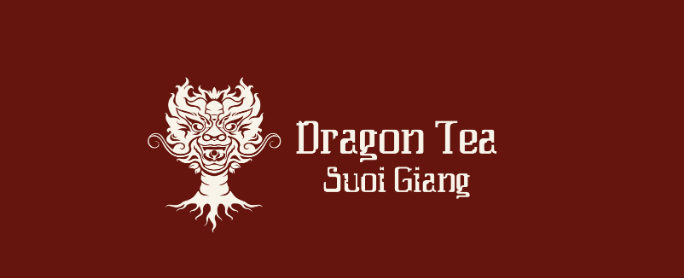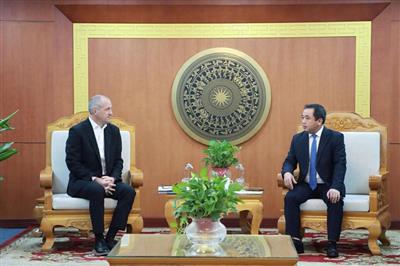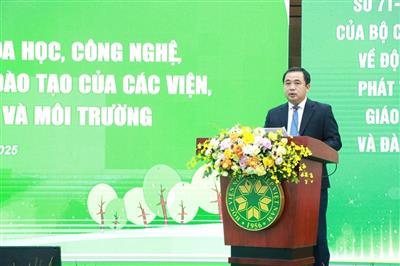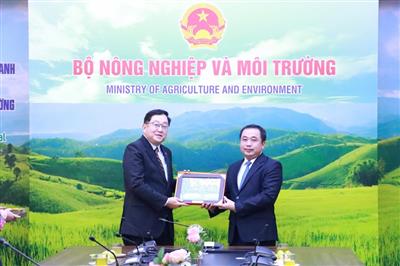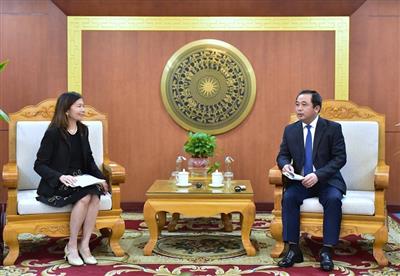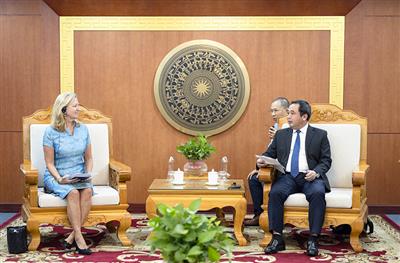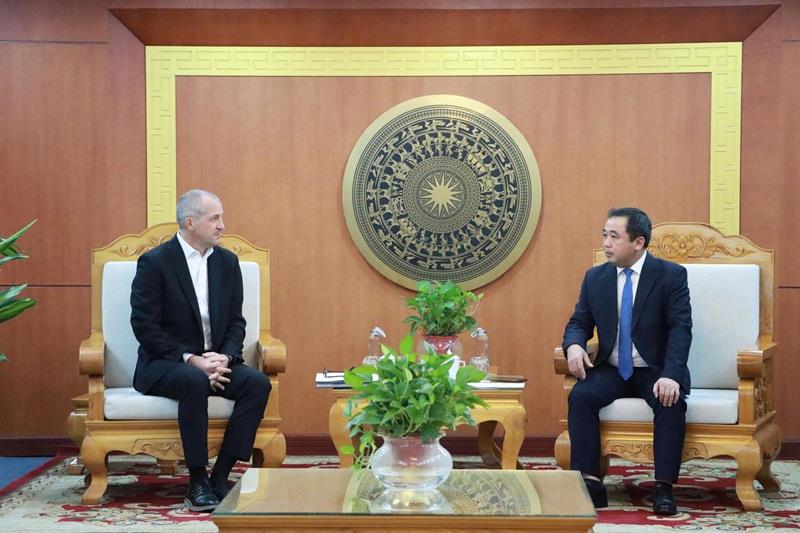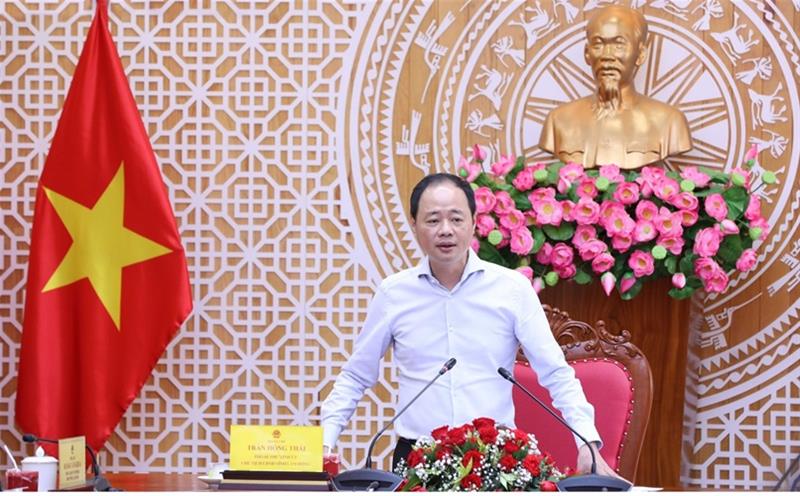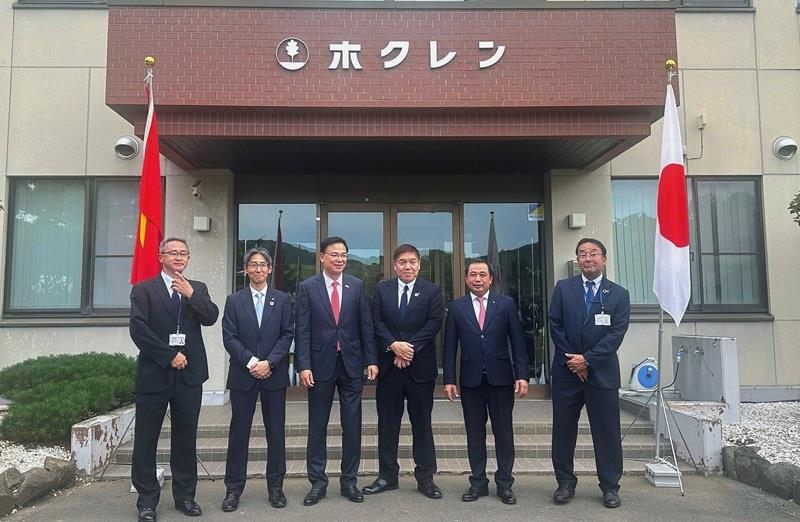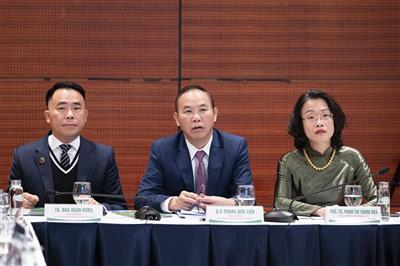
Driving green transformation: Vietnam’s agriculture and environment sector charts a new course for sustainable and inclusive growth
28/07/2025TN&MTIn the first half of 2025, Viet Nam’s agriculture and environment sector demonstrated remarkable resilience and dynamism, achieving a growth rate of 3.84%, its second-highest performance since 2021, and recording an unprecedented trade surplus of nearly USD 10 billion in agro-forestry-fishery exports. These results not only reaffirm the sector’s role as a pillar of the national economy but also reflect its steady progress in embracing institutional reform, digital transformation, and green transition.
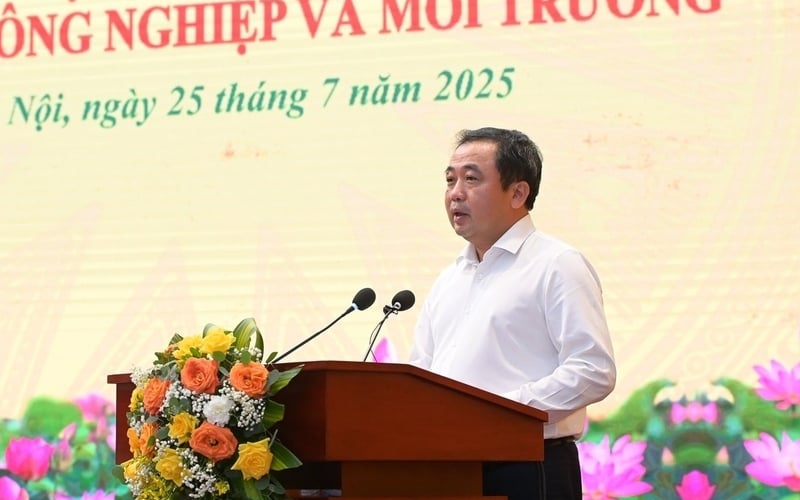
At the conference, Acting Minister of Agriculture and Environment Tran Duc Thang called on the entire sector to strengthen unity, foster innovation, and stay closely connected with local communities by streamlining administration, eliminating the district level, enhancing commune-level staff capacity in IT, and empowering local leaders to proactively engage in planning, production, and disaster response
Speaking at the mid-year review conference on July 25, Acting Minister of Agriculture and Environment Tran Duc Thang emphasized the need to reframe the entire approach to governance. “To bring about substantive transformation, we must fundamentally change our management mindset, decentralize more boldly, enhance the responsibility of local leadership, and above all, listen to what is happening on the ground,” he said. His statement captured the overarching theme of the conference: putting local realities at the heart of national strategy.
With the five guiding principles of discipline, accountability, agility, efficiency, and breakthrough, the sector is now shifting decisively from top-down administration to a more responsive, inclusive, and data-driven governance model. Across the country, localities are emerging as key agents of reform, translating policy into action, integrating digital technologies into service delivery, and accelerating climate-smart innovation. This momentum is laying the foundation for Viet Nam to lead a new model of agriculture and environmental management: green, modern, resilient, and globally connected.
Governance reform: From institutional design to real decentralization
One of the core priorities in the first half of 2025 has been accelerating institutional reform and clarifying the division of responsibilities between central and local authorities. According to the Ministry of Agriculture and Environment, 489 out of 630 administrative procedures (77.62%) under its jurisdiction have now been reviewed for delegation, with 355 procedures fully transferred to local governments.
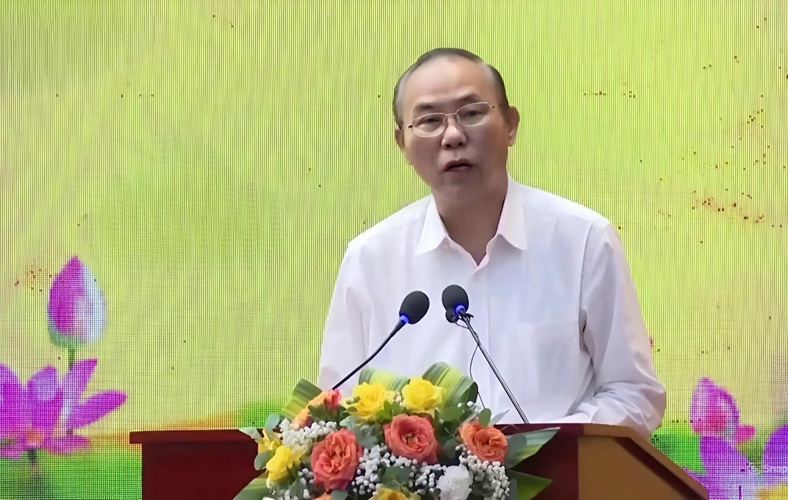
Deputy Minister Phung Duc Tien stated that the Ministry swiftly implemented government directives from early 2025, focusing on institutional stabilization, proactive policy response, and expanding agro-forestry-fishery exports
This decentralization process has not been limited to the Ministry. The report highlights that many provinces have proactively reviewed their internal mandates, strengthened staff capacity, and adapted their structures to better implement devolved functions. This approach reflects the directive of Acting Minister Tran Duc Thang, who emphasized at the mid-year conference: “Decentralization must go hand in hand with delegation of responsibility and allocation of resources. We must move beyond the ‘ask–give’ mindset and avoid managing from a distance. Every policy must be grounded in real-world practice.”
The conference also recorded encouraging shifts at the local level in investment facilitation, institutional streamlining, and the use of digital tools in management. Some provinces have proposed innovative interdepartmental coordination mechanisms and simplified procedures for internal operations.
A new governance model is emerging, one that emphasizes output-based management rather than input control. In this model, the Ministry focuses on creating enabling regulations, providing technical guidance, and conducting oversight, while provinces become the implementing agents responsible for delivering results. This framework lays the groundwork for a more flexible, responsive, and multi-level approach to managing agriculture and environmental systems in the face of growing economic and climate uncertainty.
Digital and green transitions: From policy to practical action
In the first half of 2025, Vietnam’s agriculture and environment sector identified digital transformation and green transition as two strategic pillars for modernizing governance, achieving sustainability, and progressing toward net-zero emissions.
On the digital front, the Ministry’s report highlights notable progress in applying information technology across land management, irrigation, geospatial surveying, environmental monitoring, and livestock management. By June 2025, over 90% of newly surveyed land areas had been integrated into cadastral databases, and many provinces had updated large-scale topographic data to support spatial planning and resource governance.
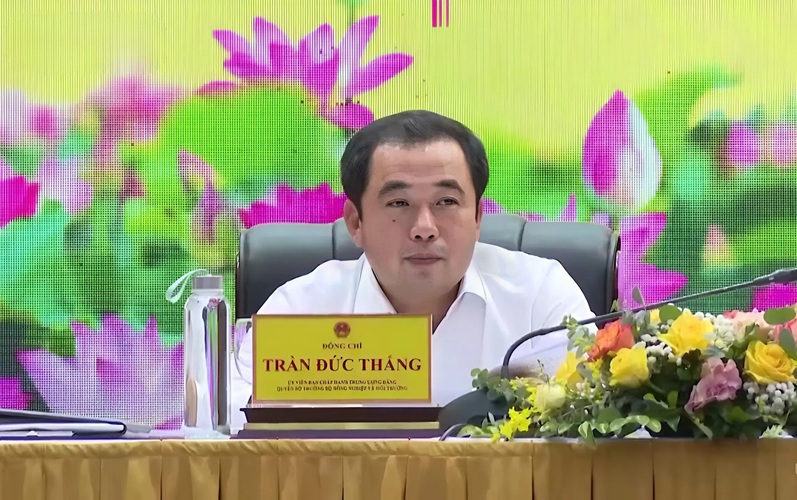
Acting Minister Tran Duc Thang emphasized that in the next five years, the agriculture and environment sector is expected to become a key growth driver, contributing to the national economy reaching double-digit growth
Several provinces, including Lam Dong, Ha Tinh, and Thua Thien Hue, were cited for deploying early warning systems, meteorological and hydrological monitoring platforms, and developing environmental information systems from the commune to provincial level. These advances are improving forecasting capabilities, enabling real-time decision-making, and strengthening disaster risk management.
In parallel, green transformation is being actively advanced through low-carbon agricultural practices and climate-smart models. The Ministry’s report notes: The implementation of the One Million Hectares of high-quality, low-emission rice program in the Mekong Delta reached over 88,000 hectares during the summer–autumn and autumn–winter crops—exceeding planned targets.
Innovative practices such as slow-release fertilizers, alternate wetting and drying (AWD) irrigation, and carbon credit recording have been adopted in provinces like Dong Thap, Can Tho, and Hau Giang.
In the environmental sector, the “Product lifecycle management and eco-labeling” project is being rolled out in coordination with the Ministry’s Environment Department and provincial authorities. This initiative contributes to the reduction of persistent organic pollutants (POPs) and mercury, while promoting sustainable consumption in agriculture and rural industry.
Taken together, these efforts demonstrate that digital transformation is no longer aspirational, it is laying the groundwork for a comprehensive sector-wide data architecture. At the same time, green transition is expanding opportunities for international cooperation, enabling access to climate finance and carbon markets.
Market integration and the impetus from international cooperation
Amid slow global recovery and rising protectionism in key markets, Vietnam’s agriculture and environment sector has delivered remarkable export performance, demonstrating resilience and forward-looking adaptability. According to the Ministry’s report, agro-forestry-fishery exports reached USD 29.2 billion in the first half of 2025, marking a 19.7% increase year-on-year. Notably, the sector posted a record trade surplus of USD 9.8 billion—the highest ever recorded for the same period.
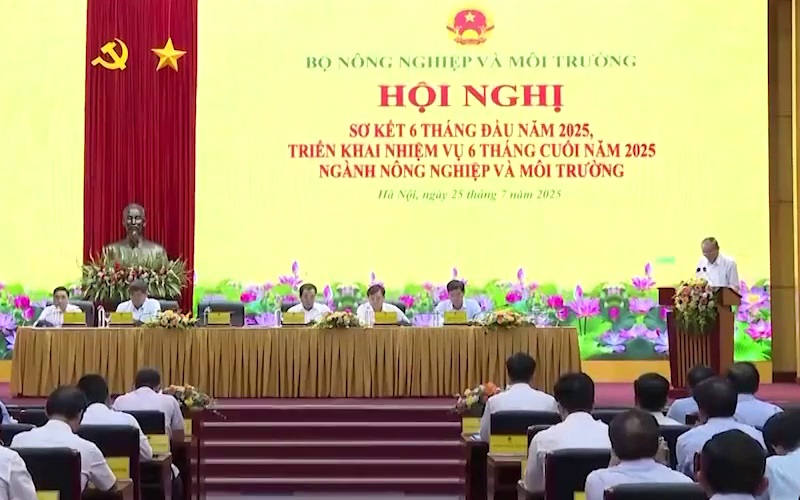
With the motto “Discipline and responsibility, proactive and timely, streamlined and effective, fast and breakthrough,” the agriculture and environment sector has entered 2025 with renewed momentum and strong determination
Key export commodities experienced substantial growth: rice rose by 33.3% in volume and 52.8% in value; coffee grew by 45.5%; seafood exports increased by 7.4%; forestry products by 18.1%; and fertilizer exports surged by 69.7%. These results stem from structural adjustments in production, expanded use of traceability systems and planting area codes, and strategic use of FTAs such as the EVFTA, CPTPP, and UKVFTA.
The report also highlights deepening international cooperation across climate change adaptation, low-emission agricultural development, technology transfer, and green standards. In the first six months of the year, the Ministry actively engaged in bilateral and multilateral cooperation platforms and advanced joint initiatives with partners such as FAO, UNDP, ADB, WB, JICA, and the EU. Flagship programs include those supporting green growth strategy implementation, food system transformation, greenhouse gas monitoring, and the development of agricultural carbon markets.
These outcomes not only affirm Vietnam’s effective integration strategy but also underscore the sector’s growing capacity to access global value chains and international climate finance mechanisms.
Key priorities for the second half of the year: Institutional breakthroughs through collective action
Concluding the sector-wide mid-year review, Acting Minister Tran Duc Thang emphasized that this was the first major conference since the Ministry completed its organizational restructuring and the nationwide implementation of the two-tier local government model. He regarded the meeting as a critical opportunity for central and local units to reflect on the operationalization of this model, share management experiences, and resolve outstanding bottlenecks in the implementation of policies at the grassroots level.
The conference recorded six presentations from local directors and department leaders, raising practical concerns over land use, air quality management, urban environmental services, and the promotion of high-quality rice production. Acting Minister Tran Duc Thang stressed that the current global and regional context remains unpredictable, with trade and tariff policies in importing countries posing key uncertainties. As such, the sector must proactively develop flexible policy scenarios and offer timely advice to the Government.
He outlined three strategic focus areas for the second half of the year: institutional reform, data infrastructure, and specialized sectoral governance. On the institutional front, the Ministry has recently submitted and issued a series of key decrees and circulars, facilitating the effective functioning of the two-tier model, advancing decentralization, and streamlining administrative procedures. The report notes that administrative reform efforts have achieved a rate of over 77%, which he described as commendable.
On data systems, the Acting Minister announced a 60-day nationwide campaign to accelerate the development of big data platforms for land, remote sensing, and disaster mapping. The Ministry’s Digital Transformation Department has been tasked with leading this initiative in coordination with the Ministry of Public Security and local authorities, ensuring timely delivery of critical databases in line with national policy targets and Resolution No. 57-NQ/TW.
Regarding sectoral governance, the Acting Minister urged relevant departments to operate with integrity, speed, and transparency. Technical departments such as Departments of Crop Production, Departments of Plant Protection, and Departments of Livestock Production and Animal Health must strengthen risk oversight to avoid potential sensitivities. The Agro-Processing Department is to focus on building a national brand strategy, while the Hydrometeorology Department is tasked with delivering accurate forecasts and timely disaster alerts. The Survey and Mapping Department has been assigned to expedite the development of flash flood maps for public warning.
Acting Minister Tran Duc Thang concluded with a strong call for closer coordination between the Ministry and local departments to maintain the stability of the two-tier government model, build a synchronized sector-wide data ecosystem, and ensure the image of Vietnam’s agriculture and environment sector remains one that is “green, clean, modern—for a sustainably developing Vietnam.”
Unified action, sustained confidence
The first half of 2025 has affirmed the Vietnamese agriculture and environment sector’s capacity to adapt, reform, and deliver results, through institutional renewal, data-driven management, and enhanced policy effectiveness at all levels. Despite a volatile global landscape, achievements in growth, exports, institutional streamlining, and international engagement have laid a firm foundation for a deeper phase of transition.
Building on this momentum, Acting Minister Tran Duc Thang has consistently emphasized the need for a new governance mindset—one that listens to local realities, empowers subnational leadership, and places data at the heart of decision-making. The initial success of the two-tier local government model must be reinforced with coherent policies, modern information infrastructure, and a strong service ethic for citizens and enterprises alike.
The second half of 2025 marks a pivotal juncture to implement Resolution No. 57-NQ/TW, successfully organize the Party Congress of the Ministry for the 2025–2030 term, and realize the shared vision of building a “green, clean, modern” sector in service of a sustainably developing Vietnam. From policymaking to execution, from central leadership to local implementation, unified action will be the key to overcoming uncertainty, reinforcing public trust, and advancing a resilient, forward-looking transformation.
Ngoc Huyen

